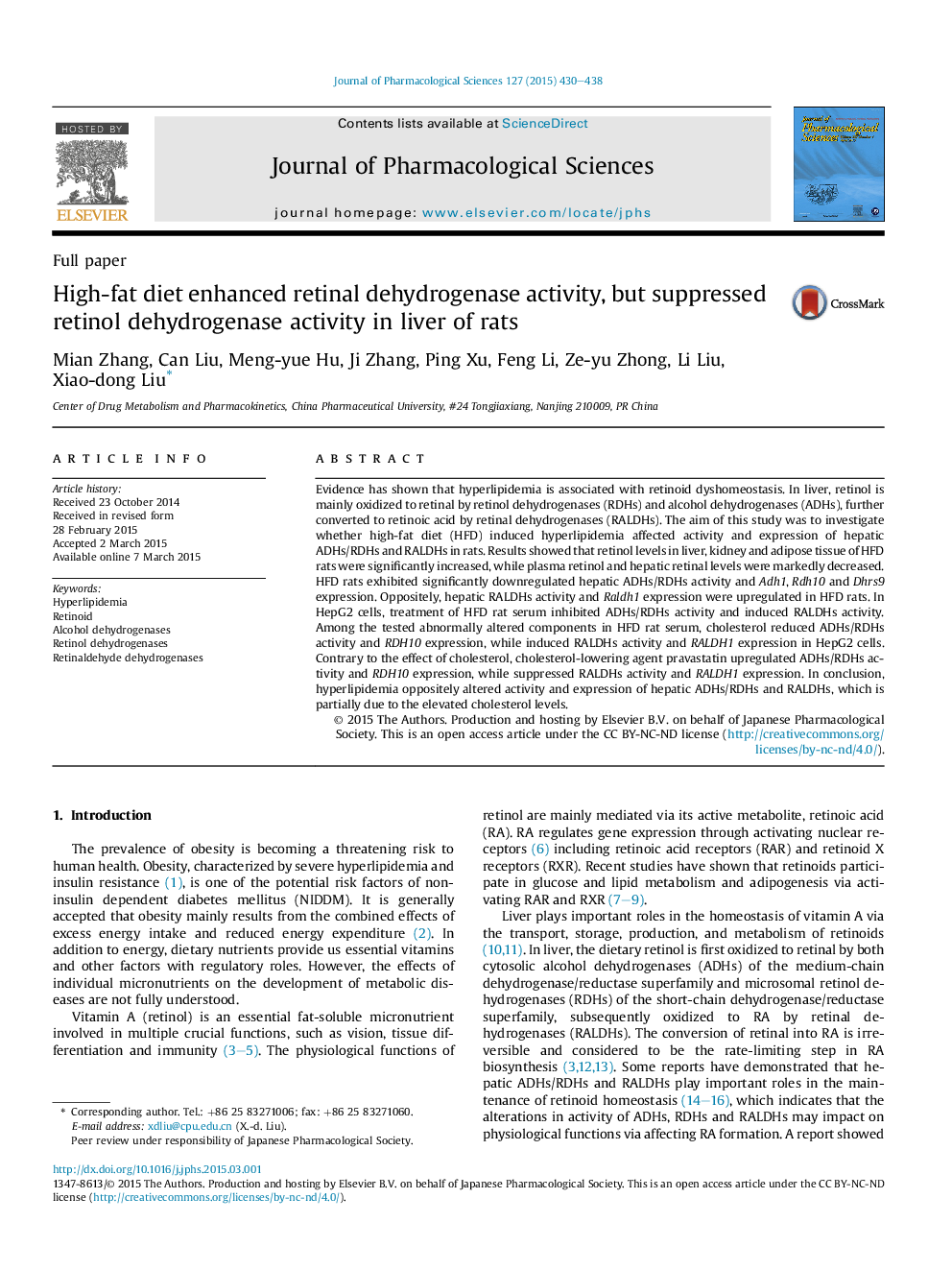| Article ID | Journal | Published Year | Pages | File Type |
|---|---|---|---|---|
| 2548865 | Journal of Pharmacological Sciences | 2015 | 9 Pages |
Evidence has shown that hyperlipidemia is associated with retinoid dyshomeostasis. In liver, retinol is mainly oxidized to retinal by retinol dehydrogenases (RDHs) and alcohol dehydrogenases (ADHs), further converted to retinoic acid by retinal dehydrogenases (RALDHs). The aim of this study was to investigate whether high-fat diet (HFD) induced hyperlipidemia affected activity and expression of hepatic ADHs/RDHs and RALDHs in rats. Results showed that retinol levels in liver, kidney and adipose tissue of HFD rats were significantly increased, while plasma retinol and hepatic retinal levels were markedly decreased. HFD rats exhibited significantly downregulated hepatic ADHs/RDHs activity and Adh1, Rdh10 and Dhrs9 expression. Oppositely, hepatic RALDHs activity and Raldh1 expression were upregulated in HFD rats. In HepG2 cells, treatment of HFD rat serum inhibited ADHs/RDHs activity and induced RALDHs activity. Among the tested abnormally altered components in HFD rat serum, cholesterol reduced ADHs/RDHs activity and RDH10 expression, while induced RALDHs activity and RALDH1 expression in HepG2 cells. Contrary to the effect of cholesterol, cholesterol-lowering agent pravastatin upregulated ADHs/RDHs activity and RDH10 expression, while suppressed RALDHs activity and RALDH1 expression. In conclusion, hyperlipidemia oppositely altered activity and expression of hepatic ADHs/RDHs and RALDHs, which is partially due to the elevated cholesterol levels.
